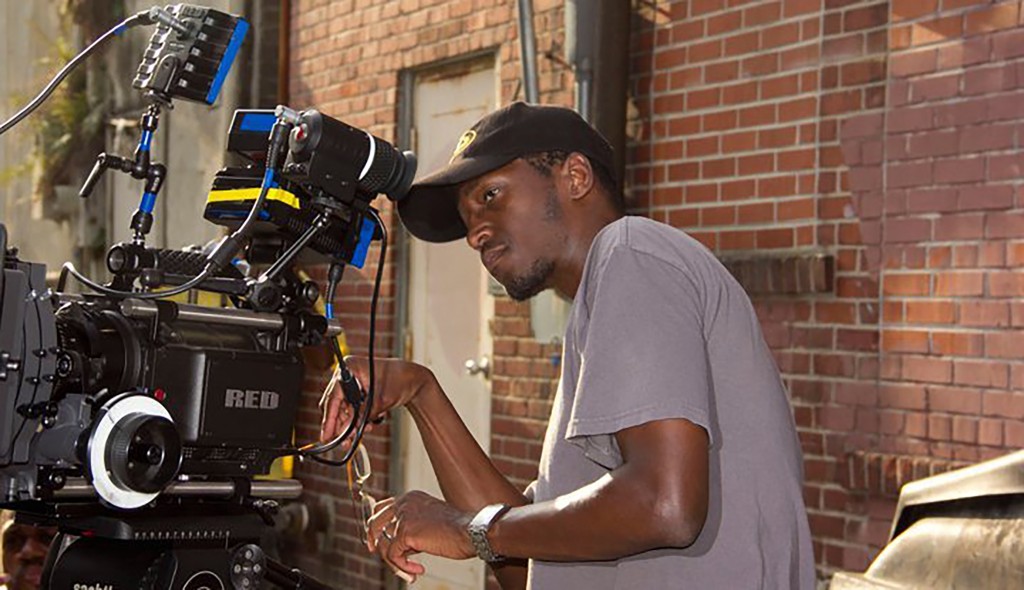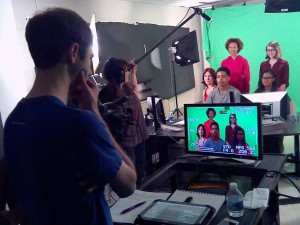John Thornton
In the past, independent filmmaking was a highly regarded, secretive, risky, and expensive practice. Thus, very few people would lay claim to the title “filmmaker,” and instead were limited to “patron,” “audience member,” or “viewer.” With the advancement of emerging digital technologies the practice of filmmaking is becoming more easily accessible. In fact, filmmaking titans, like Academy Award Winners Roger Deakins and Peter Jackson, have not only shifted from using celluloid film and antiquated technology, but have also championed digital film and its streamlined workflow. The practice of film is now for the people. Anyone with a smartphone, tablet, DSLR, or video camera, and a simple editing program like iMovie can create “instant content” and distribute it on the web via Youtube, Vimeo, Blip, or Tumbler. Likewise, online services like Ustream have revolutionized the distribution model, offering “instant content” creators a “socially-fueled video platform” to build an audience and broadcast content live over the web. But, “with great power comes great responsibility.” So, what distinguishes “instant content” from cinema?
Each semester, I begin my classes with several probing questions regarding cinema – What is Cinematic? And, what are the most easily identifiable aspects of motion pictures that determine if it is indeed “cinematic? Is it the lighting? The acting? The “look?” Rarely does anything in a film occur by accident, by chance, or by whim. Instead, the creative visionaries, including the director, the production designer, and the director of photography, collectively decide how the audience should feel throughout the film, and then they develop plans to trigger those emotions. Whereas “instant content creators” often accept the tools and elements that are at their disposal, filmmaking is a deliberate exercise that tests the creator’s ability to map every beat, secure every location, plan every shot, interpret every musical cue, and plan every lighting change. It is an intentional process of selecting the appropriate tools for the story, to prompt emotional responses from the audience. Thus, although elements like excellent lighting and performance are common in “cinematic films,” they are attributes that work together to achieve the greater goal of revealing the story. They are but instruments in the storyteller’s toolbox. The filmmaker’s selection of the appropriate instruments to tell the story, then, is ultimately what will determine if a film is “cinematic.”
Such method of inquiry is significant, because before my students ever touch a camera, or are introduced to the lighting and grip equipment in the LMC’s video lab, they must first demonstrate a clear understanding that the filmmaker’s “great power” lies in her ability to tell compelling stories, employing the cinematic tools in her toolkit, much like a storyteller uses inflection, movement, facial expressions, and sound. This understanding of the filmmaker’s “power” helps students get beyond the sensation of doing something “cinematic” simply because it “looks cool” or “feels right.”
How can students at Georgia Tech learn to maximize cinematic tools?
I believe one of the best ways to learn how to make a movie is through practical application. In my classes, I guide students through all three phases of production, i.e., Pre-production, Production, and Post-production, emphasizing how decisions regarding cameras, lenses, color, light, and location, affect the storytelling of a film. We begin with several ideas before determining which challenge has the most creative potential. Since making a film is a collaborative effort, extensive class time is devoted to understanding the roles and responsibilities on a film crew, and to practicing how to effectively communicate as a crewmember. I also incorporate workshops on topics like Directing Actors and Producing a Short Film, as well as hands-on activities to allow students to gain confidence and familiarity with using Hi-Definition cameras, grip and lighting equipment, and cinematic lenses.
What types of opportunities are available to students interested in film at Tech?
The “Video Production” course explores the creative and logistical challenges of producing and filming an ultra low budget short film. Students can expect to complete a short movie, a commercial, a mini documentary, and/or a music video, while learning basic lighting, editing, field sound recording, and postproduction techniques. Occasionally however, we identify a single project that not only encompasses the course objectives, but also offers a significant challenge for everyone involved. For instance, last semester the students in “Video Production” competed in the Hyundai Lens of Loyalty Short Film Contest. Hyundai reached out to 25 different universities to develop and submit a one page treatment for a film that showcases “the football related traditions that inspires ever student who has walked those hallowed halls of higher learning.” Georgia Tech was one of seven schools selected as a finalist, and awarded a $10,000 production grant to create a film. Preproduction for the Hyundai Project expanded two months for a four-day shoot that included two principal actors, three dozen background extras, six exterior locations, and Tech’s beloved mascot, BUZZ. It was a student driven, interdisciplinary collaboration that involved LMC, Tech’s Living History Program, the Tech Archives, the Athletic Department, the Tech Wreck Club, the School of Music, Institute Communications, and Tech’s Legal Counsel. With the $10,000 production grant, the students were able to secure locations, hire talent, and rent equipment. It was indeed a fantastic real-world learning opportunity.
In addition, students in the Advanced Video Production course are given opportunities to work on Client Based Projects (CBPs). The Ivan Allen College is keenly interested in collaborative opportunities that “define and solve problems, illuminate socially and ethically conscious strategies for positive action, and connect knowledge and expertise in the liberal arts.” CBPs allow students to utilize the skills they obtained in previous courses to pitch, develop, and produce content for on-campus and off-campus organizations. Some of the previous CBP collaborators have included:
- The George W. Woodruff School of Mechanical Engineering: Students completed a promotional video for the 2012 Inventure Prize at Tech competition.
- The Women’s Resource Center: Students created a documentary and promotional trailer for 2013 “Take Back the Night” event.
- The Graduate Student Government: Students produced a documentary, promotional video, and montage for the 2013 Georgia Tech Research & Innovation Conference.
- Roaring Lion Productions and MVMedia: Students came together to work on the Steampunk feature length film “Rite of Passage,” which is written by Milton Davis and directed by Balogun Ojetade.
By critically exploring the planning, composition, and execution of a short film, students ultimately gain a better understanding of the artistic roles on a production crew and learn to master the creation of visually compelling and emotionally powerful images in a studio setting.


